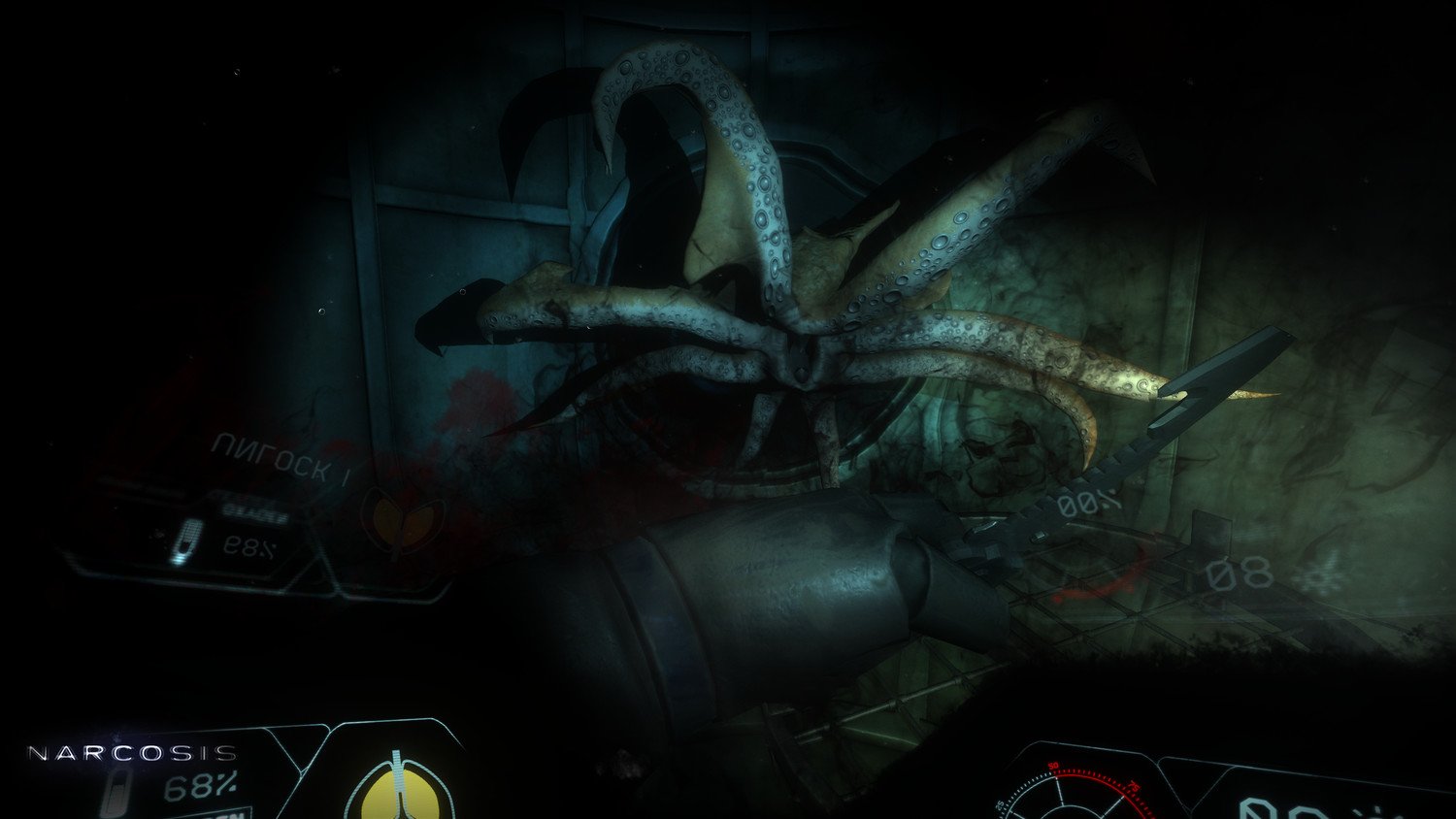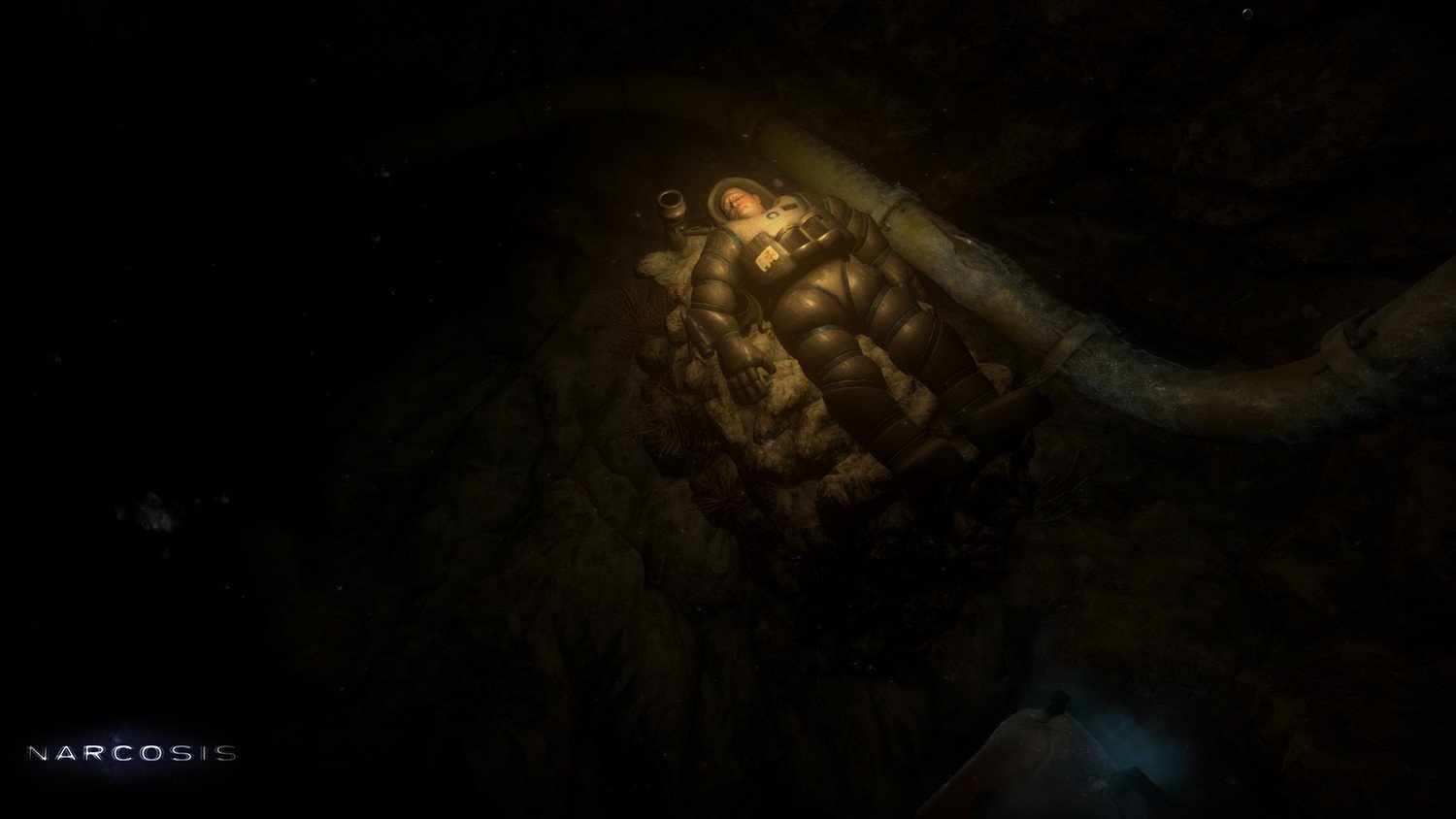
The biggest part of it is our imaginations. They say we know less about the deep ocean than we do about space, and both locations usually end up being the arenas for some grizzly deaths, such as in Dead Space or Bioshock. This is because both places are uninhabitable by mankind. We can put men there, but not for any great duration of time. And we certainly cannot thrive in these places, so our imaginations run amok to fill in the blanks for what we do not yet know.
Narcosis puts us in the dive suit of Kip Mattas, the lone survivor of the "Oceanova Disaster" where 20 people died while working on a deep sea methane hydrate drilling rig. An earthquake hit 50 miles from where they were working, and aftershocks destroyed the base. Kip must keep his dive suit topped up with oxygen and remain calm if he's going to find survivors and get back to the surface.
The life aquatic
Traditional survival-horror games hit you hard and fast with scares, but Narcosis has a slower trend. Favoring psychological impact and deep thinking over obvious and in-your-face gore, it's a slow but bright burn, like a flare in the night.
Hulking in your one-ton titanium steel dive suit, you feel heavy and sluggish. The interior displays a basic overview of flares, thrust output, oxygen stores and breathing rate. Underwater games and levels have generally been the bane of many gamers' existence, so Honor Code, the developer, kept things simple.
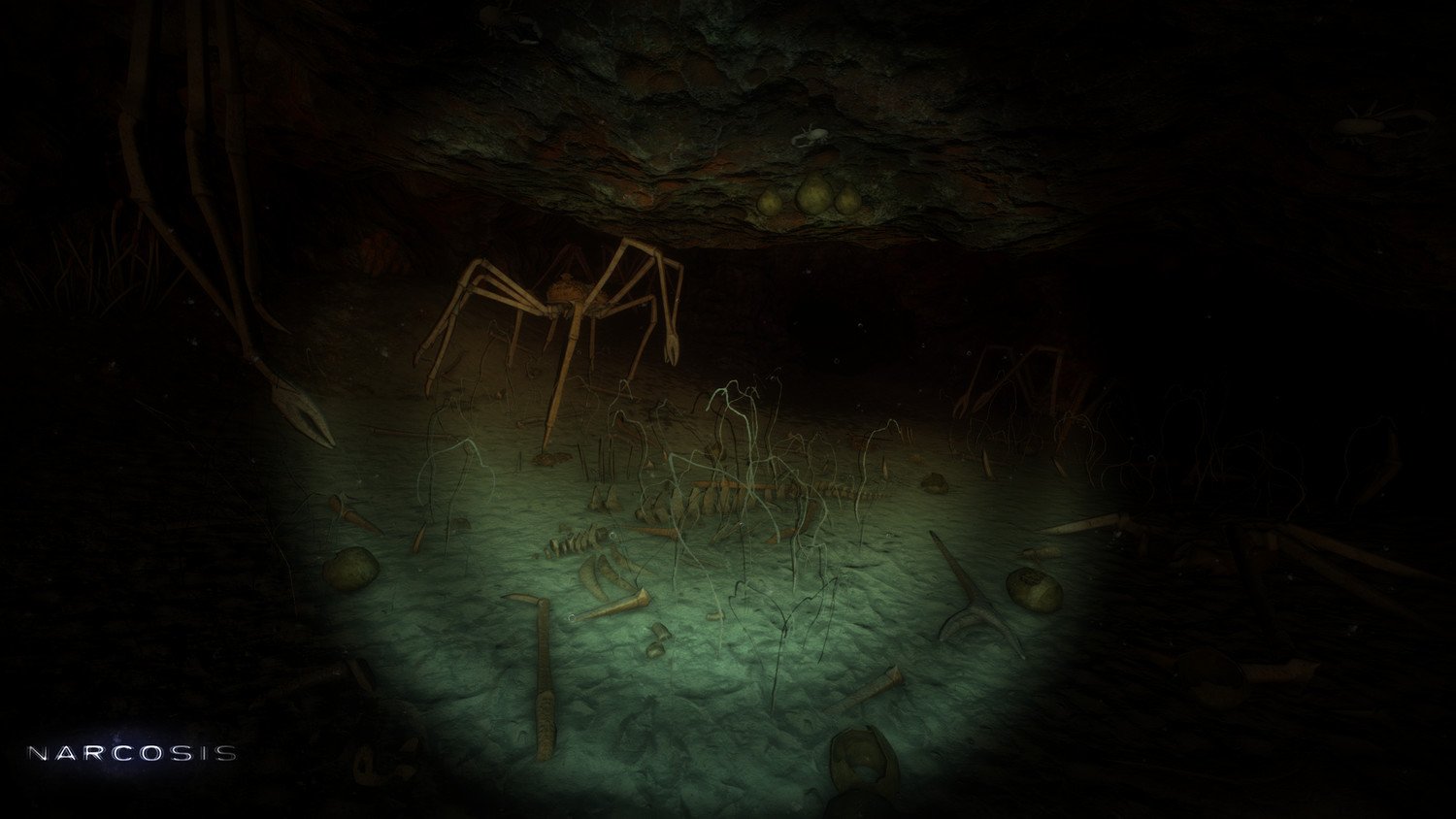
My first excursion into the deep sea didn't go so well. The behemoth suit around you deflects all damage, and you are impervious to harm, apart from spider crabs. They will kick a hole right through your faceplate, their giant spear-like legs puncturing your deep sea Iron Man suit like it was made of lycra. You can't even get a preemptive stab in with your knife. I tried that and got a leg through the stomach for my trouble. The best way to deal with the sea life is to leave it alone. The crabs walk harmlessly by given enough room, but other piscine friends are more aggressive.
As I stomped into one waterlogged room guarded by two squids, an anglerfish began headbutting the window, cracking the glass and desperate to get in. When confronted with scary situations, such as deep sea tremors, angler fish attacks or finding the dead bodies of one of your crewmates, Kip begins to panic, rapidly decreasing his oxygen. Pushing closer to 0 percent, his vision goes fuzzy, the room starts to take on a twisted tunnel-like quality, and eventually you die and respawn at the start of the chapter or the last automatic checkpoint.
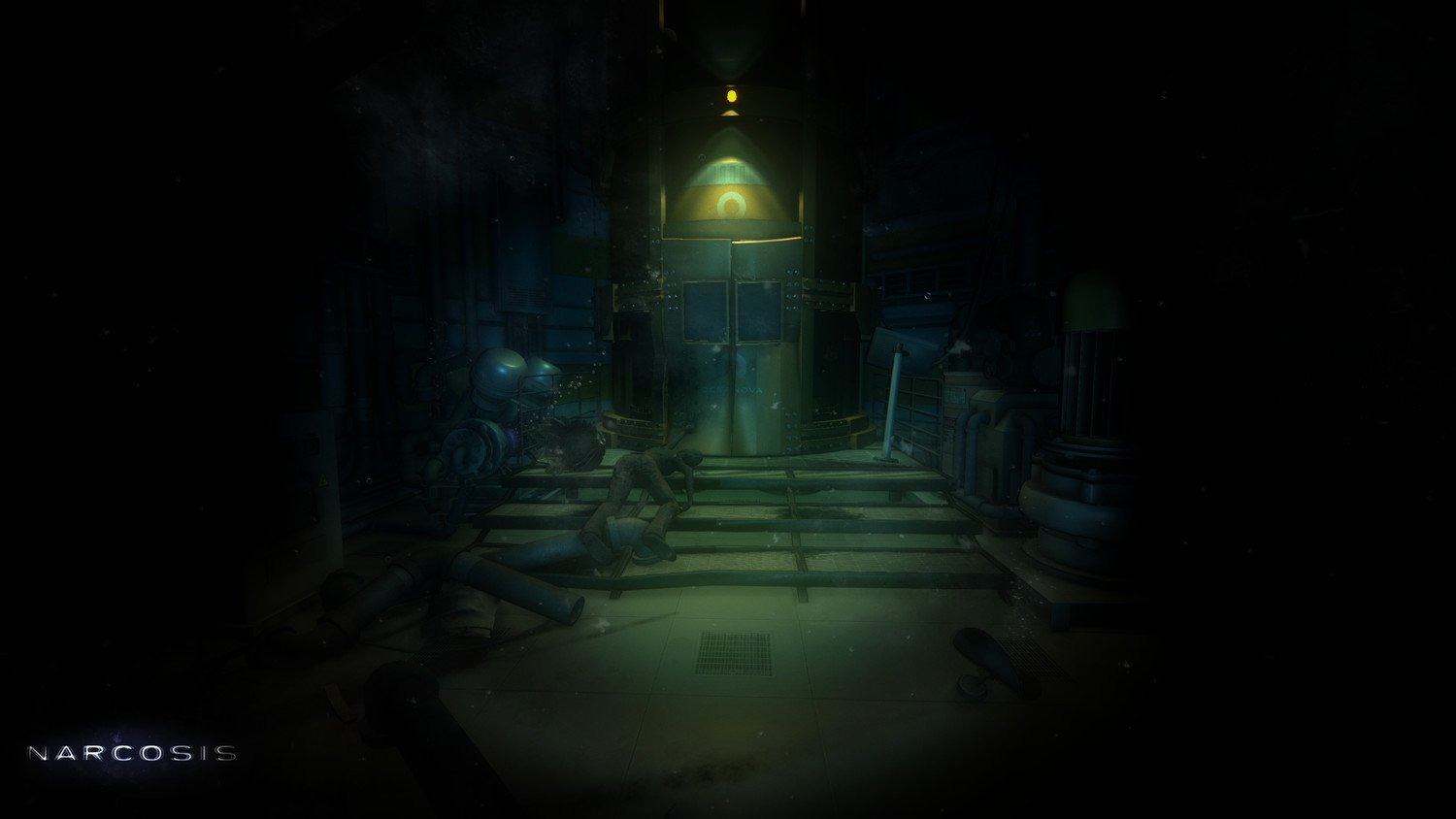
The walking dead
Its simplicity is a huge draw, with terrains that feel labyrinthine yet traversable with the use of thrusters and flares. Oxygen is the one resource you'll need to keep an eye on, and thankfully there is plenty of it to be found. With the ocean environments being so dark, it is possible to miss refill stations and spare canisters, so keeping your levels topped up is a priority.
All the latest news, reviews, and guides for Windows and Xbox diehards.
It's really learning what came to pass as Kip tried to survive that is the clincher. Each chapter is relatively short, just a few minutes, with the overall game being only a couple of hours long.
There is a lot of emphasis on pressure, and you know by now he's not just talking about PSI. The hab has a crew of 20 but was built for more, and Kip notes it had a bit of an "empty feeling" with so few aboard. Working at the bottom of the sea, so far from "real life" and other people, the company tried to give them all the entertainment and comforts they could need. But though the dive suit keeps things out, it also keeps things in, and there is no accounting for what lurks within your own mind.
Honor Code really pushed for the player to have an experience that is as much in their own head as it is Kip's. With no hope of being rescued, and everyone else dead, it's hard to not let your imagination run wild. As he recounts his story, you're hounded by hallucinations. But it isn't a relentless barrage of horror.
At one point in the game, Kip is being chased down a corridor by an empty dive suit, the red glow of his light shining on the wall ahead of him. As I turned the corner, I saw another light coming towards me. I tried another path and it split off into two more paths with dive suits stalking me. I was trapped as they all descended upon me, until they suddenly broke and fell apart into pieces onto the floor. But these instances are few and far between.
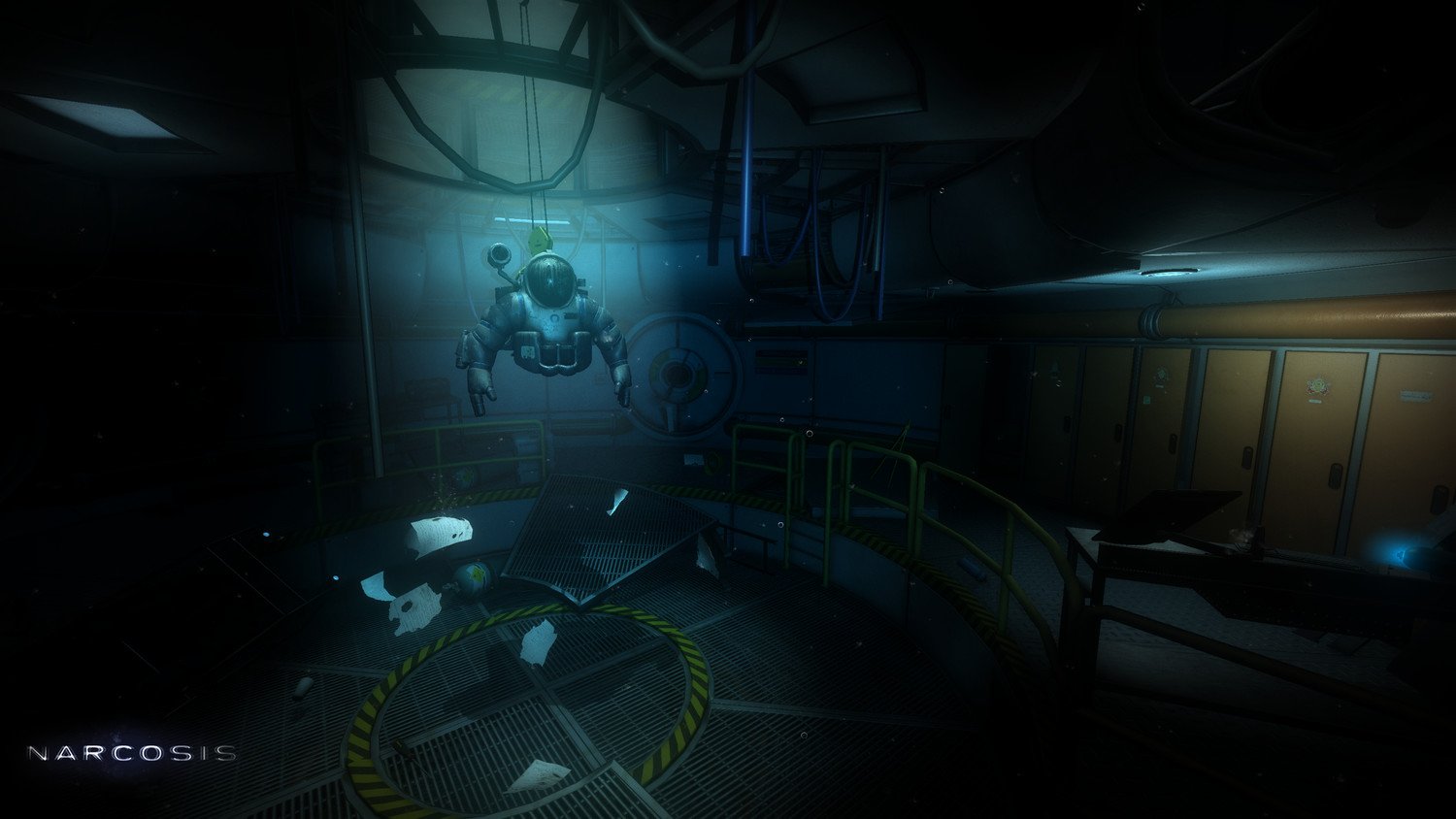
I'd be very keen to try Narcosis on the new Xbox "Scorpio" and put the VR through its paces. Made to be a VR experience, it's playable and enjoyable without it, but it's almost obvious that this is what's missing on Xbox One. At times, it felt like Narcosis lacked punch. Despite its setting and story, I felt like it lacked the real weight that immersion with VR would give to the game. Seeing a spider crab loom out of the darkness is creepy enough, but it felt flat to not experience it in VR as intended. Narcosis is also available on Steam, with VR compatibility.
Summary
A short experience of about three to four hours, I was surprised the game ended when it did, because I'd become gripped by the story and revelations throughout. The horror is mild, and the only resource to worry about is oxygen, so it makes Narcosis a relatively gentle entry into the psychological survival horror fray.
It's a thought-provoking and story-driven experience that I wanted more of, and a gripping narrative and boisterous sea creatures make Narcosis definitely worth a play.
Pros:
- Simple design.
- Gripping story.
- Well-paced narrative.
- It would be a good game for new players of the survival-horror genre.
Cons:
- Surprisingly short.
- Needs VR to be a truly breathtaking experience.
Narcosis is available May 10 2017.
Disclaimer: This review was conducted on Xbox One with a code provided by the developer.

Lauren Relph is a Former Games Writer, focusing on Xbox. She doesn't like piña coladas but loves getting caught in the rain. Follow her on Twitter!
